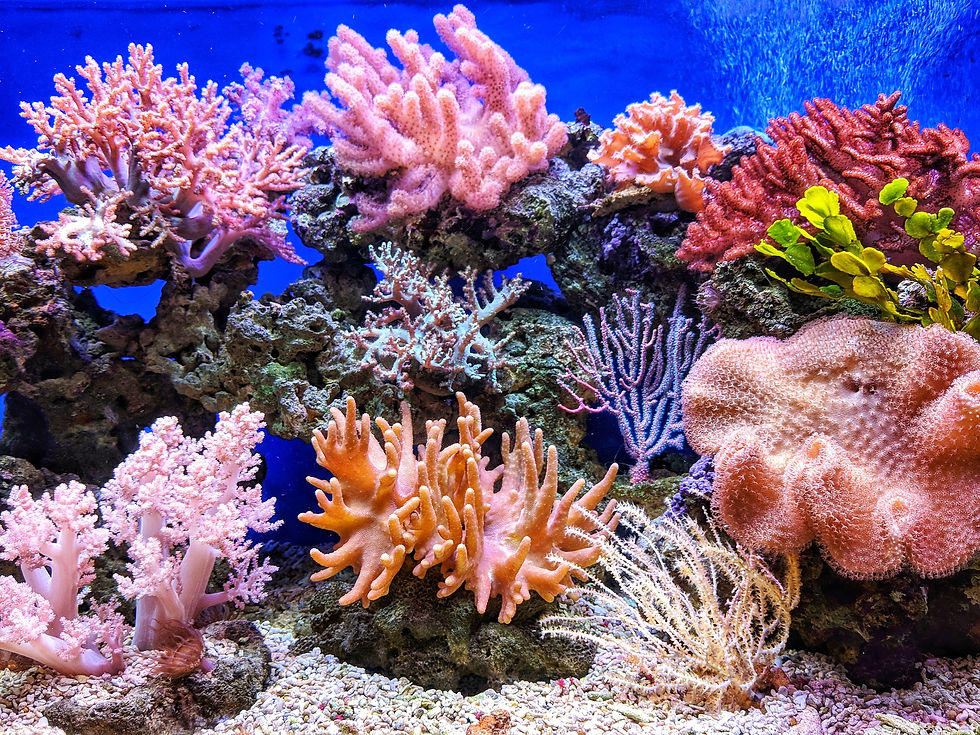How To Combat Plastic Pollution in Our Oceans
- Joe Jackson

- Jun 22, 2021
- 3 min read
Updated: Aug 16, 2021
Fashion’s impact on our environment and its pollution is currently a trendy topic; everyone’s heard the sustainability buzzwords. However, what does it all actually mean?
As much as terms like sustainable and circular fashion gets tossed around, it can be difficult to make heads or tails of them and further know how you can pitch in and help out.
It is a mammoth task we’re set against. If the situation does not change soon, there will be more plastic in the sea than fish by 2050. We’re currently tossing 12.7 million tonnes of plastic pollutants into our oceans every year; and these plastics are going to take 20 to 500 years to decompose.
Fashion is responsible for most of this pollution; clothing and textiles are the primary sources of microplastics in our oceans. They’re so abundant that anyone who eats fish will have ingested them at some point in their life!
As the facts and figures paint an increasingly dire picture, it is easy to feel helpless, not knowing what to do. Whilst we can’t undo a lot of the damage that’s already been done there are simple changes we can make to help stop the problem from getting any worse.
Where should we shop?
Possibly the biggest hurdle to effective sustainability and reducing our pollution is fast fashion. Therefore, the biggest lesson here is where not to buy from and why.
The fashion industry, up until the mid-twentieth century, ran on four seasons a year: fall, winter spring and summer. As fashion changes, it moves away from high society and is becoming more accessible to the everyday consumer.
There are now over 50 micro-seasons; coming down to a new collection nearly every week! This has led to stores having a huge supply of stock all of the time. With this increased rate of production, the speed at which clothes are being made is leading to a severely compromised product. This process lacks the kind of quality control that creates well-made clothing; clothing which survives more than three washes.
The increased demand created by the crazy number of seasons and the less durable clothes leads to increased production. This in turn leads to more pollution through plastic waste generated in the process and the toxic dyes used in production. Over 250 ‘restricted substances’ have been found in textile manufacturing; these dyes are responsible for over 2.5 billion gallons of wastewater in China alone.
Fast fashion practices are used by stores appealing to the ‘fashion-conscious’ consumer. This probably means a lot of your high street favourites. Primark, Pretty Little Thing, Boohoo, (the now dead) Topshop and Urban Outfitters are a just a small number of the brands that use fast fashion practices. When avoiding fast fashion, it might be best to avoid the high street and chain stores altogether.
Instead…
You can try out new materials. In place of the plastics and non-biodegradable fibres, eco-friendly and green fashion companies are taking advantage of material advancements to replace these with biodegradable natural fibres and leathers.
For example, there is now “leather” created from a number of materials such as pineapple leaves, sustainable cotton, linen and plant-based “vegan leather” alternatives are just a few. The production of these material is more sustainable; requiring less water and not releasing chemicals into the ocean.
While this is the way forward, it is often a more expensive option than the fast fashion equivalent. Whether money is a concern or you’d rather just save some extra, there are also cheaper sustainable options. This comes mostly in the form of purchasing clothes that are in some way second-hand.
The most popular of the second-hand buying methods is finding clothes in charity shops. Almost adopted from the American thrifting trend, you can do sustainability on a budget using charity shops. Here all the clothes are second hand and are often cheaper than fast fashion. It accessible to everyone and exciting as it has an element of adventure, hunting for the perfect piece.
Another way into second hand clothing is vintage pieces, or ‘kilo sales’. Vintage pieces are distinguished from charity shops as there is less looking involved. The clothes are also generally more desirable, although they come at a higher price.
Events such as ‘kilo sales’ allow consumers to browse through stock hosting vintage or recycled items in large markets. The price at these events is dictated by the kilo weight.
We can all make a contribution, no matter how small or large, to living more sustainably and avoiding plastic pollution.
Even if it’s only one thrifted t-shirt, you’re doing your part to help save our oceans.



Comments